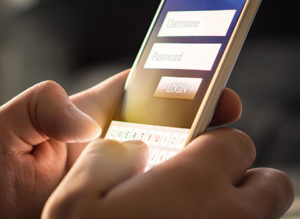Protect Your Company with This Social Media Security Advice
Social media is an excellent tool for small businesses, yet, the use of social media by small business staff can definitely put the company in danger. Many small business owners and managers don’t realize this.
Recently, I was talking to employees of a credit union about what to do in a robbery. Before this presentation, police officers had staged a robbery in the same credit union. The fake robbery was so real, some of the tellers were brought to tears, thinking they were really getting robbed.
After they were filled in on what was happening, everyone on the team discussed it. One of the most telling moments is when one of the tellers shared her story. During the mock robbery, one of the “robbers” handed a teller a note. It said this: “Your husband works at Pine Street Motors. We kidnapped him this morning. He is being held at another location. If you hit the alarm and notify police, he’s going to be killed.”
How did the bad guys know that her husband worked at Pine Street Motors? They simply looked online. They found the name of the bank, and then found out that the teller was listed as working at the bank on social media. Her social media account was connected to her husband’s, and his account said that he worked at Pine Street Motors.
Yes, it was that easy.
Here are some tips for social media that you might want to share with your staff:
Don’t Tell the Internet Where You Work
Tell employees that it’s not a good idea to share too many details about their work on social media pages. Though you can’t stop them from adding their employer on Facebook, you can tell them how this information can be used against them and the company. Make sure that they understand that this information could backfire and harm everyone involved.
Teach Your Staff How to Use Privacy Settings
You should also teach staff how to manage their social media privacy settings. Ideally, they should have maximum protection on every account. The default settings are lacking, and those put them at risk for hacking. You should also tell them that even the highest settings that social media sites have won’t keep everyone out. However, this level of protection is better than nothing.
Create a Workplace Policy for Social Media Use
Set up a policy in your workplace for social media use. Make sure this policy covers what employees associated with your company can say and what is totally prohibited.
Stop Banning the Use of Social Media in the Office
The moment you ban the use of social media at work, that’s the moment that someone will sneak around and do it anyway. This, of course, leads to dangerous things, as they can try getting around the firewall and other things that make your network vulnerable.
Train Your IT Team
Finally, make sure that your IT team is up to date on the latest ways to combat online-security issues. These teams must also know about the security risks that your business faces due to social media.
Additionally, the policy for employee social media use should be examined and updated quite regularly, and make sure to enforce it, too. Invest in anti-virus protection and make sure that all operating systems and browsers are always kept up to date when updates become available.
Robert Siciliano personal security and identity theft expert and speaker is the author of Identity Theft Privacy: Security Protection and Fraud Prevention: Your Guide to Protecting Yourself from Identity Theft and Computer Fraud. See him knock’em dead in this Security Awareness Training video.

 How does this work? If a hacker already has your mobile phone number, they can get other information, such as you address, birthday, or even the last four digits of your Social Security number, through social engineering schemes via email or on social. Once they have this information, it’s like handing your phone over to them and letting them do as they please, including accessing your accounts.
How does this work? If a hacker already has your mobile phone number, they can get other information, such as you address, birthday, or even the last four digits of your Social Security number, through social engineering schemes via email or on social. Once they have this information, it’s like handing your phone over to them and letting them do as they please, including accessing your accounts. Attackers often look for targets who are unsuspecting. One of attackers “tools of the trade” is the element of surprise. So, live like your heads on a swivel which means be aware and do things like park your car or walk only in areas that are well-lit. You should also avoid parking next to a large truck or van where an attacker might pull you in
Attackers often look for targets who are unsuspecting. One of attackers “tools of the trade” is the element of surprise. So, live like your heads on a swivel which means be aware and do things like park your car or walk only in areas that are well-lit. You should also avoid parking next to a large truck or van where an attacker might pull you in This is no different than labeling a food as “natural,” even though it is not actually “organic.” At best, this is incorrect information. At worst, it’s a total lie.
This is no different than labeling a food as “natural,” even though it is not actually “organic.” At best, this is incorrect information. At worst, it’s a total lie. Knife Safety:
Knife Safety:























